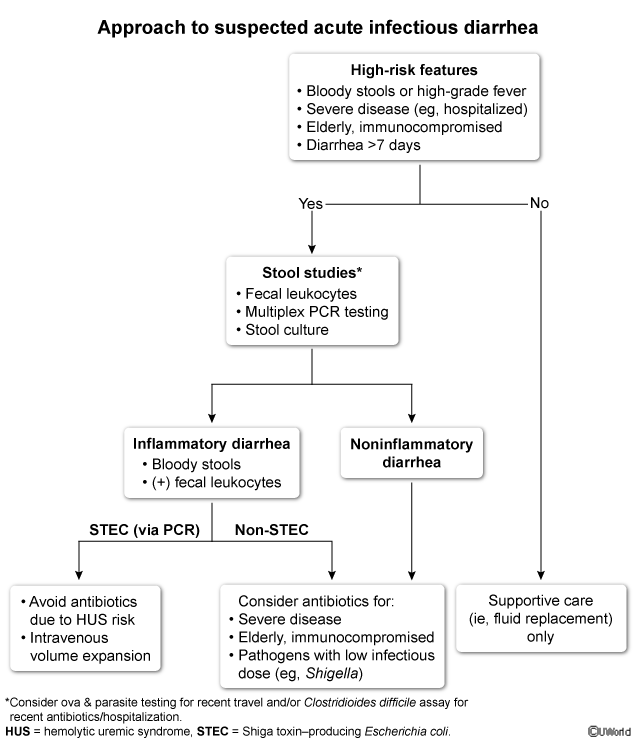Salmonella
Article Sections
Introduction
Salmonella are gram-negative, facultative anaerobic bacilli from the Enterobacteriaceae family. These bacteria are primarily transmitted through the fecal-oral route, often via contaminated food or water. Salmonella infections can present with a spectrum of disease ranging from asymptomatic colonization to severe systemic illness. Clinically, salmonellosis can manifest as gastroenteritis or, less commonly, invasive forms such as enteric fever, which is typically associated with resource-limited regions. The most common species associated with human infections are Salmonella enterica subspecies, which are further classified into serotypes (eg, Enteritidis, Typhi, Paratyphi).
Pathophysiology
After they are ingested, Salmonella bacteria adhere to and invade the epithelial cells of the small intestine, specifically in the ileum. The bacteria travel in vacuoles from the apical to the basolateral end of the cell and invade the lamina propria.
Continue Learning with UWorld
Get the full Salmonella article plus rich visuals, real-world cases, and in-depth insights from medical experts, all available through the UWorld Medical Library.
Figures
